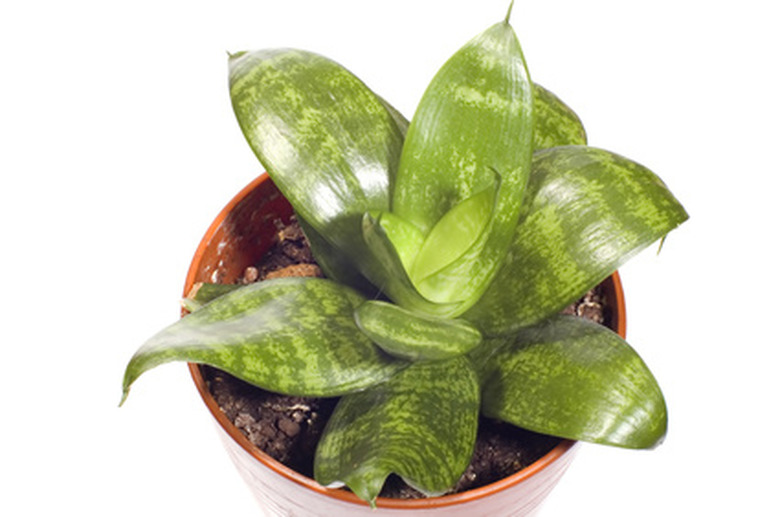Planting Snake Plants Outdoors
Things Needed
- Fertilizer
- Organic compost
- Water
The snake plant, or Sansevieria trifasciata, is an evergreen, native to Africa. This plant produces stiff, sword-like leaves with a rich, dark-green color and yellow marginal bands. This resilient grower will tolerates almost any soil condition and thrives in moderate temperatures between 60 to 85 degrees F. Though usually grown as houseplant in the United States, it can be planted outdoors year round in U.S. Department of Agriculture Plant Hardiness zones 9B through 11, according to the University of Florida Cooperative Extension Service.
Step 1
Choose a well-drained, nutrient-rich planting location in partial to full shade. Ensure that the area is slightly elevated to prevent settling water and puddles during rainy periods.
Step 2
Loosen the soil of the planting area to eliminate compacted and clumped soils. Incorporate an equal amount of organic compost and fine sand into the planting location to promote increased drainage and moisture levels.
- The snake plant, or Sansevieria trifasciata, is an evergreen, native to Africa.
- This resilient grower will tolerates almost any soil condition and thrives in moderate temperatures between 60 to 85 degrees F. Though usually grown as houseplant in the United States, it can be planted outdoors year round in U.S. Department of Agriculture Plant Hardiness zones 9B through 11, according to the University of Florida Cooperative Extension Service.
Step 3
Dig a hole for the snake plant that is slightly wider than the root system, though about as deep. Position the snake plant in the center of the hole and gently press the soil around the plant to secure its upright position.
Step 4
Irrigate the plant immediately after planting to promote a good establishment. Water the snake plant approximately once each week and maintain a somewhat dry, barely moist soil environment. The snake plant cannot tolerate high levels of moisture.
Step 5
Protect the moisture levels of the snake plant by applying a thin layer of organic mulch around the base of the plant. Create a 1-inch layer using a finely texture mulch to allow new leaves to emerge with ease.
- Dig a hole for the snake plant that is slightly wider than the root system, though about as deep.
- Protect the moisture levels of the snake plant by applying a thin layer of organic mulch around the base of the plant.
Step 6
Begin fertilizer applications approximately one month after planting and continue to feed monthly during the growing season. Use a well-balanced, water-soluble fertilizer at half strength. Apply the fertilizer evenly around the planting area but avoid direct contact with the plant.
Step 7
Keep the snake plant's planting area free of weed invasion to prevent competition. Remove weeds as they appear. Pull the weeds from the area by hand, ensuring that the root is also removed.
